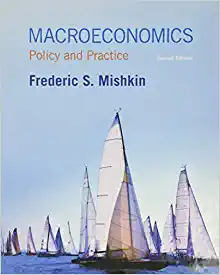Question
The French economist Antoine Cournot developed an interesting model of competition in an oligopoly that now bears his name. In a Cournot oligopoly, all of
The French economist Antoine Cournot developed an interesting model of competition in an oligopoly that now bears his name. In a Cournot oligopoly, all of the firms know that the total output from all firms will determine the price (based on the downward-sloping market demand curve), but they make independent and simultaneous decisions about how much output to produce. Cournot developed this model after observing how a spring water duopoly (two firms) behaved. So let's look at a duopoly example.
For each firm to decide how much to produce, it must make a guess about how much the other firm is going to produce. Also, the firms basically assume that once the other firm has decided how much to produce, it can't really change its decision.
Here's an example. Suppose the market demand curve for gallons of fresh spring water looks like the one below and, to keep things simple, the marginal cost of spring water is zero. If Firm X believes that Firm Y is going to produce 100 gallons of spring water, for example, then Firm X knows that if it produces 0 gallons, the price will be $2.75; if it produces 100 gallons, the price will be $2.50, and so on. Basically, Firm X will face its own demand curve where all of the quantities are lower by 100.
Market Demand
Price Quantity demanded
$3.00 .................. 0 gallons
$2.75 .................. 100 gallons
$2.50 .................. 200 gallons
$2.25 .................. 300 gallons
$2.00 .................. 400 gallons
$1.75 .................. 500 gallons
$1.50 .................. 600 gallons
$1.25 .................. 700 gallons
$1.00 .................. 800 gallons
$0.75 .................. 900 gallons
$0.50 ..................1,000 gallons
Based on the demand schedule above, calculate the demand schedule that Firm X would face if it suspected Firm Y was going to produce 0, 200, 400, or 600 gallons of spring water. Then, figure out the profit-maximizing amount of spring water for Firm X to produce in response. Fill in the table below.
If Firm Y produces. . .. . .then Firm X should produce. . .
0 gallons .........................................................................
200 gallons .......................................................................
400 gallons .......................................................................
600 gallons .......................................................................
What you have just constructed is what economists would call Firm X's reaction function. Even though Firm X thought about the different choices Firm Y could make, Firm Y is not actually going to choose just any random level of output. In fact, Firm Y has its own reaction function, where it considers how best to respond to what it thinks Firm X is doing. Because both firms have the same zero marginal cost, the two reaction functions are symmetrical. (Thus, Firm Y's reaction function looks the same, only with "X" and "Y" switched.)
Graph the two reaction functions. Do you notice any points that stand out? Describe why this point represents an equilibrium for both firms.
Step by Step Solution
There are 3 Steps involved in it
Step: 1

Get Instant Access to Expert-Tailored Solutions
See step-by-step solutions with expert insights and AI powered tools for academic success
Step: 2

Step: 3

Ace Your Homework with AI
Get the answers you need in no time with our AI-driven, step-by-step assistance
Get Started


